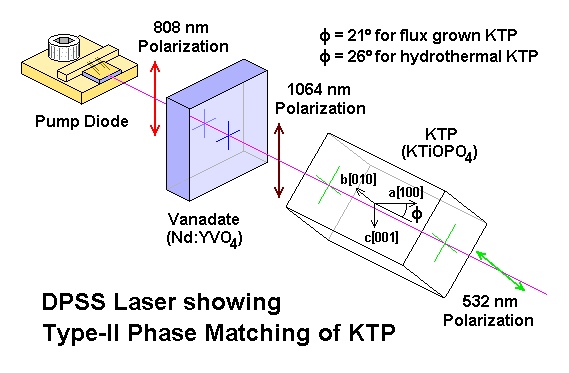Is possible that your diode is broken, but being an 808nm, it's hard to say yes or no with bare eyes .....
You need a webcam that show the IR (the cheapest ones usually don't have anti-IR filters in the lens assembly), or a photocam or videocamera that can see IR ..... for try if they see the IR, just point them on the led of a TV remote control and press a key, if you see light flashes, they see IR .....
Now, set your diode in some stable holder (also a third hand / helping hand is ok for a quick test), and connect it to your driver in the correct way, with the trimmer in the maximum resistance position, and point the diode to a wall or a flat surface, non reflective (cardboard, paper or similar) at 10 or 15cm of distance, point the webcam/camera on the same point on the wall/cardboard/whatever you use, and power up the diode (NEVER point the camera directly to the diode ..... no reasons for risk to damage it)
At this point, if your diode still emits something, with enough current you must see some light on the wall, through the camers (not at eyes) ..... the schematic that i have posted, with these values, permit you to change the current from approximatively 80mA to approximatively 430mA (enough for test the diode and see if it lase), and usually those diodes have a threshold (current where they start to lase) around 160/180mA ..... at low current, you probably see just a very faint halo of light, with no defined shape, like this
Slowly increasing the current, if the light remain the same, or increase a bit, but not take a defined shape, then your diode is LEDed (it don't lase anymore, and you can throw it away) ..... as example, also this one is LEDed ..... very bright at 650mA, but no lasing, just a spot
If at a certain point instead the light halo change shape, assuming a shape like these ones, and remaining "in shape" increasing the current, then it still lase (don't keep these tests more long that 5 or 10 seconds, in these conditions and without a heatsink) ..... just after the threshold level:
and at 300mA:
also this one is lasing ..... more large shaped bar, but still stable and coherent
If instead you see "half bars", or bars with black spots or lines through them, or very deformed, the diode is still lasing, but the chip is damaged, and you can throw it away.












